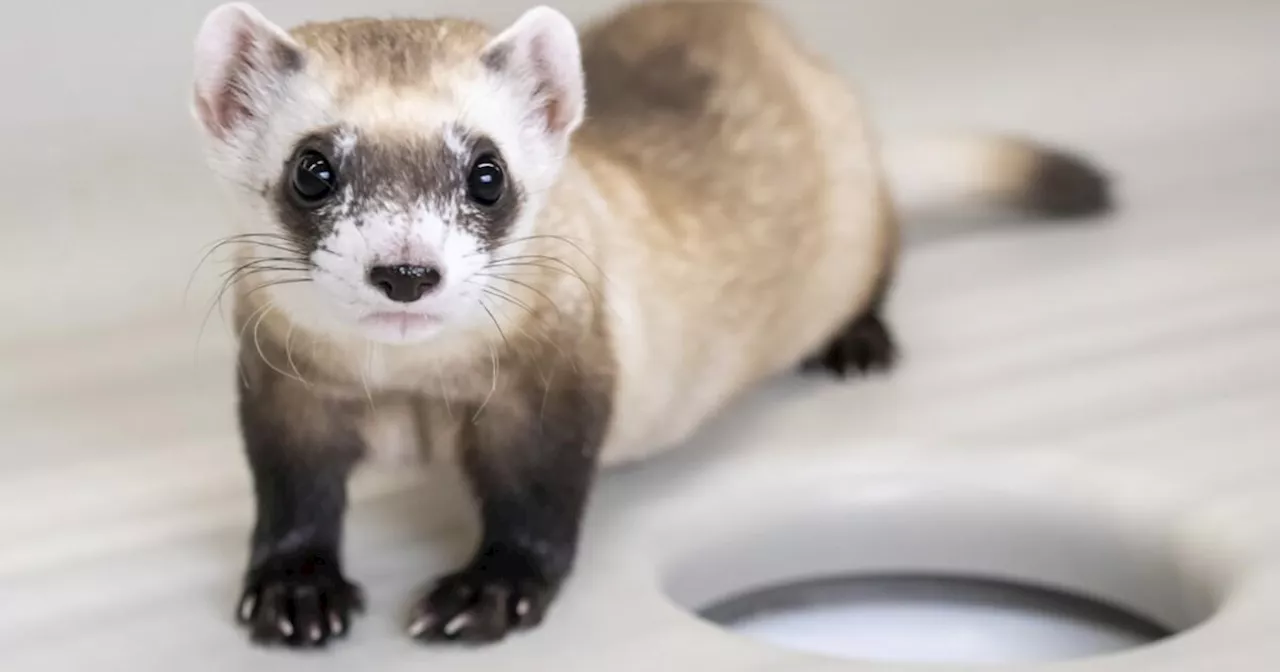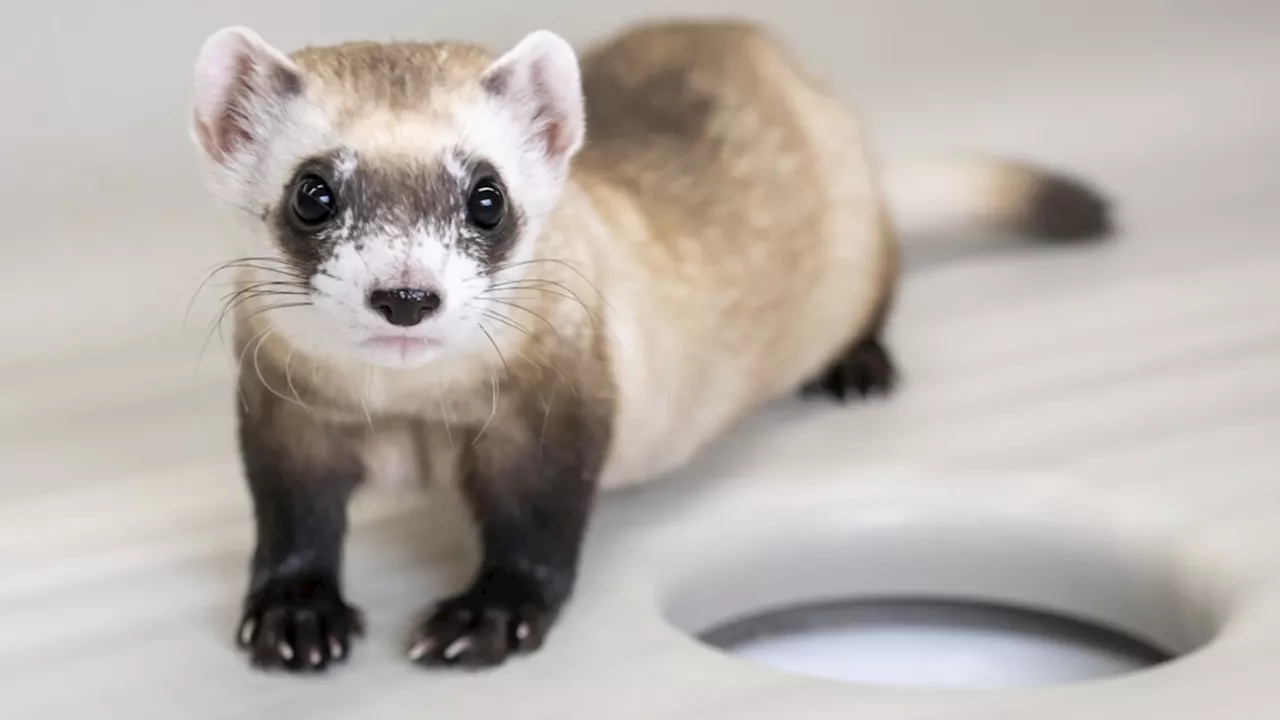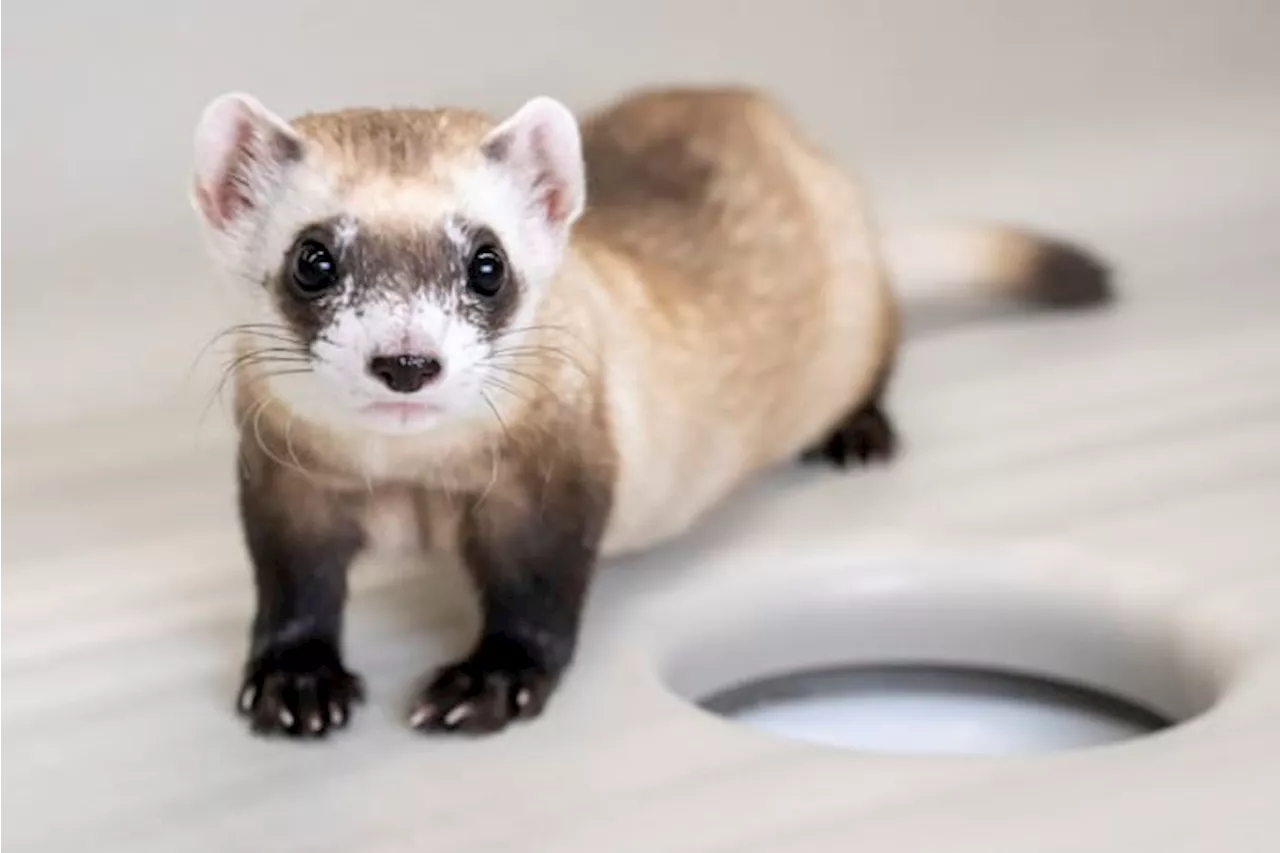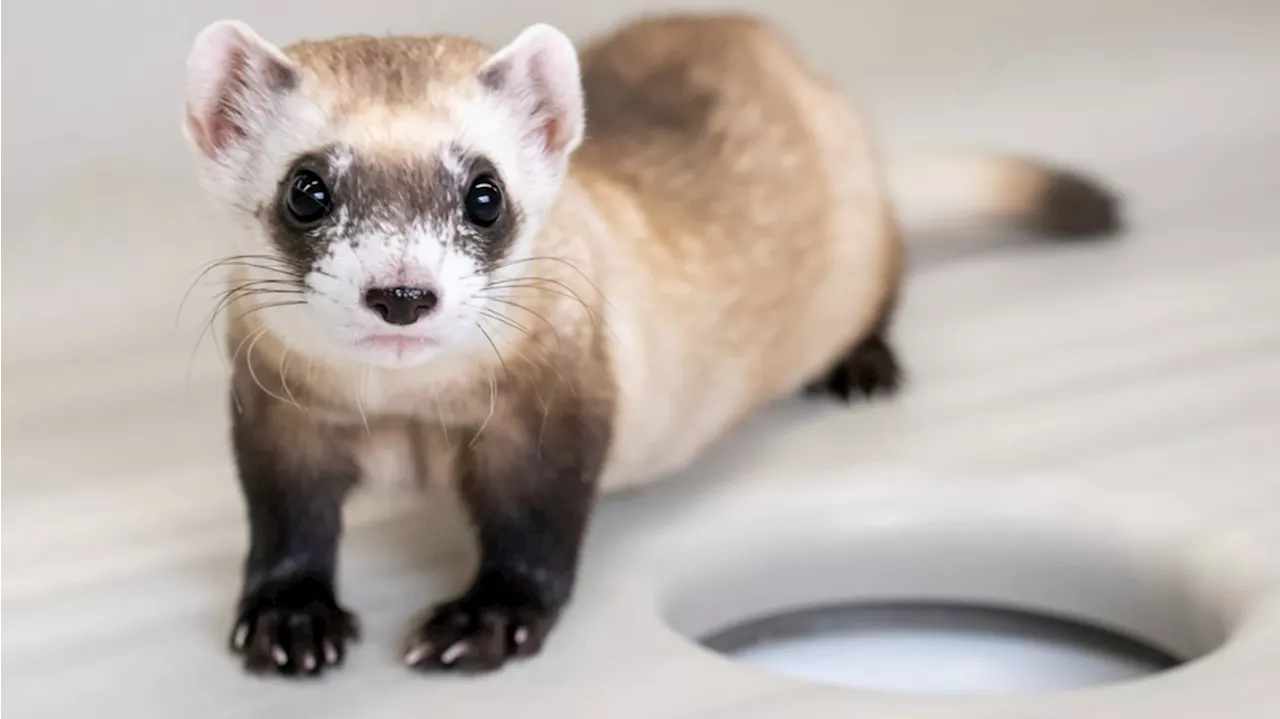We're tracking highs barely getting to 70 for Sunday
A cloned black-footed ferret named Noreen, Feb. 19, 2024, at the National Black-Footed Ferret Conservation Center.CHEYENNE, Wyo. — Two more black-footed ferrets have been cloned from the genes used for the first clone of an endangered species in the U.S., bringing to three the number of slinky predators genetically identical to one of the last such animals found in the wild, the U.S. Fish and Wildlife Service announced Wednesday.
Energetic and curious, black-footed ferrets are a nocturnal type of weasel with dark eye markings resembling a robber's mask. Their prey is prairie dogs, and the ferrets hunt the rodents in often vast burrow colonies on the plains. Black-footed ferrets are now a conservation success story — after being all but wiped out in the wild, thousands of them have been bred in captivity and Because they feed exclusively on prairie dogs, they have been victims of farmer and rancher efforts to poison and shoot the land-churning rodents — so much so that they were thought to be extinct, until a ranch dog named Shep brought a dead one home in western Wyoming in 1981.
But their gene pool is small — all known black-footed ferrets today are descendants of those seven animals — so diversifying the species is critically important., are genetically identical to Willa, one of the original seven.
Elizabeth Ann still lives at the National Black-footed Ferret Conservation Center in Fort Collins, Colorado, but she's been unable to breed, due to a reproductive organ issue that isn't a result of being cloned, the Fish and Wildlife Service said in a statement.The ferrets were born at the ferret conservation center last May.
Indonesia Berita Terbaru, Indonesia Berita utama
Similar News:Anda juga dapat membaca berita serupa dengan ini yang kami kumpulkan dari sumber berita lain.
 Cloning makes three: Two more endangered ferrets are gene copies of critter frozen in 1980sThe U.S. Fish and Wildlife Service says two more black-footed ferrets have been cloned from the genes used for the first clone of an endangered species in the U.S.
Cloning makes three: Two more endangered ferrets are gene copies of critter frozen in 1980sThe U.S. Fish and Wildlife Service says two more black-footed ferrets have been cloned from the genes used for the first clone of an endangered species in the U.S.
Baca lebih lajut »
 Cloning makes three: Two more endangered ferrets are gene copies of critter frozen in 1980sThe U.S. Fish and Wildlife Service says two more black-footed ferrets have been cloned from the genes used for the first clone of an endangered species in the U.S. These three slinky predators are genetically identical to a single animal frozen back in the 1980s.
Cloning makes three: Two more endangered ferrets are gene copies of critter frozen in 1980sThe U.S. Fish and Wildlife Service says two more black-footed ferrets have been cloned from the genes used for the first clone of an endangered species in the U.S. These three slinky predators are genetically identical to a single animal frozen back in the 1980s.
Baca lebih lajut »
 Cloning makes three: Two more endangered ferrets are gene copies of critter frozen in 1980sThe U.S. Fish and Wildlife Service says two more black-footed ferrets have been cloned from the genes used for the first clone of an endangered species in the U.S. These three slinky predators are genetically identical to a single animal frozen back in the 1980s.
Cloning makes three: Two more endangered ferrets are gene copies of critter frozen in 1980sThe U.S. Fish and Wildlife Service says two more black-footed ferrets have been cloned from the genes used for the first clone of an endangered species in the U.S. These three slinky predators are genetically identical to a single animal frozen back in the 1980s.
Baca lebih lajut »
 Cloning makes three: Two more endangered ferrets are gene copies of critter frozen in 1980sThe U.S. Fish and Wildlife Service says two more black-footed ferrets have been cloned from the genes used for the first clone of an endangered species in the U.S. These three slinky predators are genetically identical to a single animal frozen back in the 1980s.
Cloning makes three: Two more endangered ferrets are gene copies of critter frozen in 1980sThe U.S. Fish and Wildlife Service says two more black-footed ferrets have been cloned from the genes used for the first clone of an endangered species in the U.S. These three slinky predators are genetically identical to a single animal frozen back in the 1980s.
Baca lebih lajut »
 Cloning makes three: Two more endangered ferrets are gene copies of critter frozen in 1980sThe U.S. Fish and Wildlife Service says two more black-footed ferrets have been cloned from the genes used for the first clone of an endangered species in the U.S. These three slinky predators are genetically identical to a single animal frozen back in the 1980s.
Cloning makes three: Two more endangered ferrets are gene copies of critter frozen in 1980sThe U.S. Fish and Wildlife Service says two more black-footed ferrets have been cloned from the genes used for the first clone of an endangered species in the U.S. These three slinky predators are genetically identical to a single animal frozen back in the 1980s.
Baca lebih lajut »
 Archbishop Gomez and believers celebrate Palm Sunday Mass on SundayPalm Sunday Mass at the Cathedral of Our Lady in downtown Los Angeles included the blessing of the palms.
Archbishop Gomez and believers celebrate Palm Sunday Mass on SundayPalm Sunday Mass at the Cathedral of Our Lady in downtown Los Angeles included the blessing of the palms.
Baca lebih lajut »
